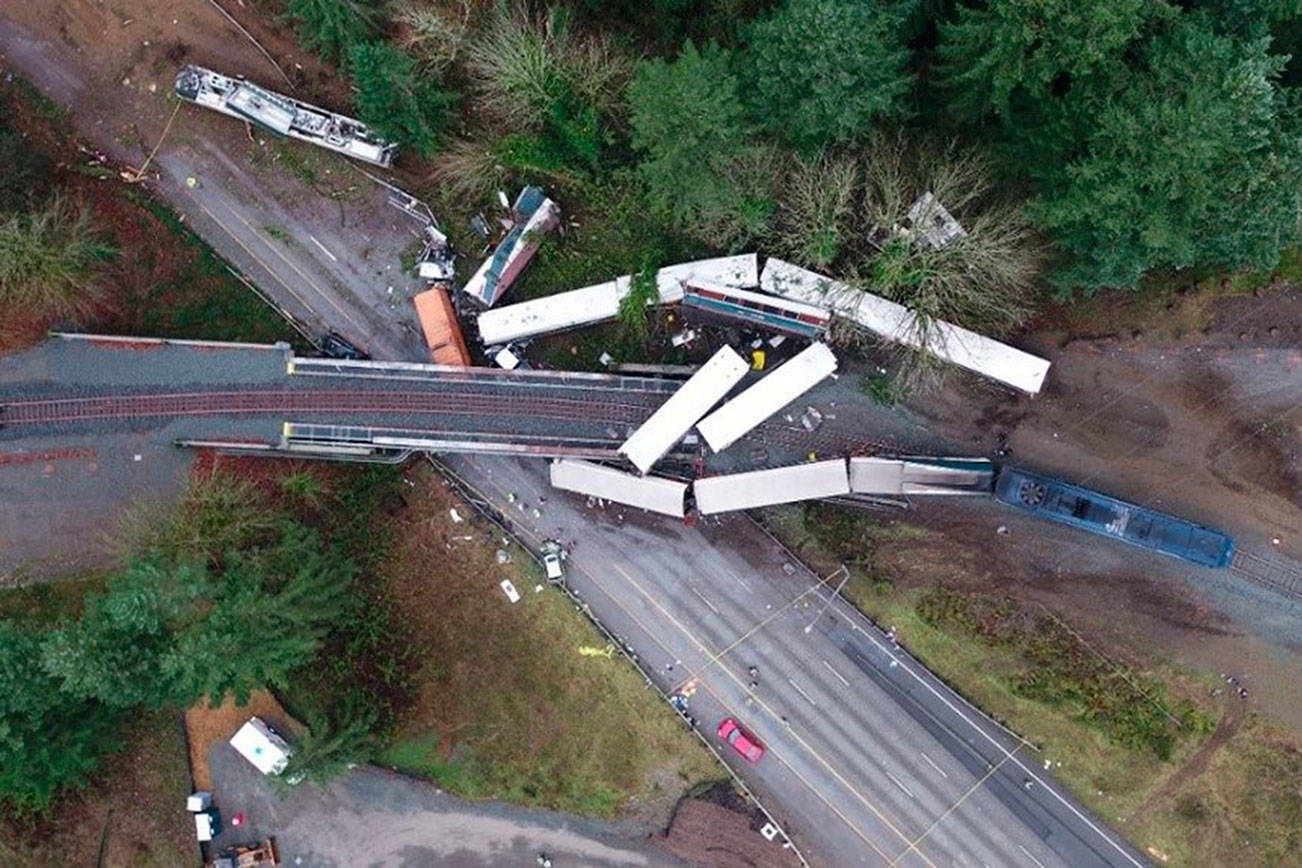A new lawsuit has been filed stemming from the 2017 Amtrak Cascades passenger train derailment near DuPont, Wash., that killed three people and injured dozens.
The lawsuit was filed on behalf of Timothy Brodigan and his parents. Brodigan was then 16 years old and was paralyzed by the crash. It’s the latest in a string of lawsuits that have forced Amtrak to pay millions. However, this lawsuit further names the Washington State Department of Transportation and Sound Transit as defendants.
“This gives us the power to dig,” said Todd Gardner, the Renton-based attorney representing the Brodigans.
Gardner said Brodigan has been recovering at a hospital in Denver. He’s still not able to walk without a walker, and his family has split their time between Washington and Colorado.
Naming the state and the two transit agencies as defendants will let the plaintiffs dig further into the relationship between the state and agencies. Gardner hopes this sheds more light on the errors that made the derailment possible on Dec. 18, 2017.
“This was not an act of God… this was negligence,” Gardner said.
Amtrak did not provide comment for this story, and a Sound Transit spokesperson said the agency is reviewing the lawsuit. The Washington State Department of Transportation did not return a request for comment at the time of publication.
Other lawsuits have resulted in large payments, including a 2019 case where the jury awarded $17 million to several plaintiffs, the Seattle Times reported. A separate lawsuit netted $4.5 million. Gardner said he expects to win millions, either in a jury trial or settlement.
The 2017 crash happened on a stretch of rail owned by Sound Transit known as the Point Defiance Bypass. It would have allowed the train, owned by Amtrak, to finish its route 10 minutes faster. The crash occurred on its inaugural passenger run. The state Department of Transportation provides oversight for both companies.
On the route, there were two major curves that required the trains to reduce speed. The curve where the train derailed required trains to slow from 79 mph to 30 mph. When the train hit that curve in 2017, it was going more than 80 mph.
The lawsuit said there were speed limit signs that signaled the reduction two miles before the curve and immediately ahead of it. Trains take at least one mile to fully stop, Gardner said.
The lawsuit also alleges Amtrak didn’t provide properly trained employees to drive the train. The engineer who was driving the train also sued Amtrak earlier this year, claiming he hadn’t received adequate training to safely drive the train.
At the time of the derailment, Sound Transit was in the process of installing a system known as Positive Train Control, which automatically slows down trains when needed. However, it had not been completed at the time of the crash.
The lawsuit alleges that if this system had been active, the derailment likely woudn’t have happened.
In November, Amtrak changed its ticket policy, barring passengers from suing. The company has also been obligated to pay out hundreds of millions of dollars for a 2015 derailment in Philadelphia that killed eight and injured hundreds.



